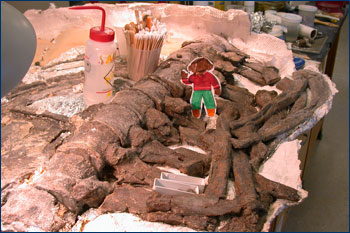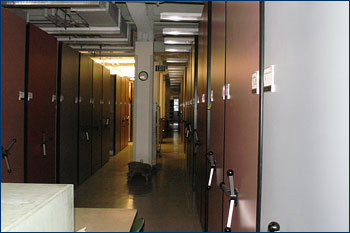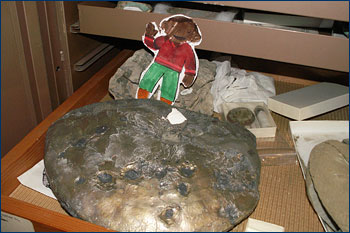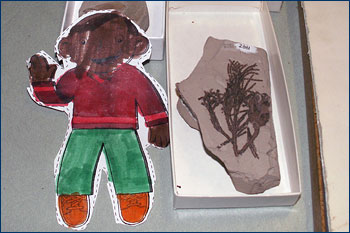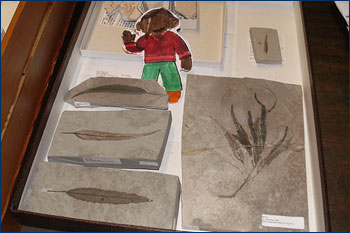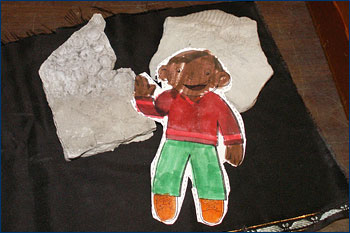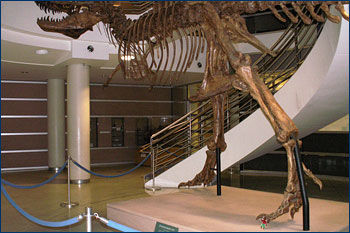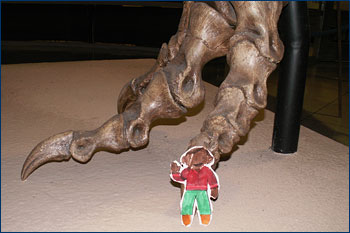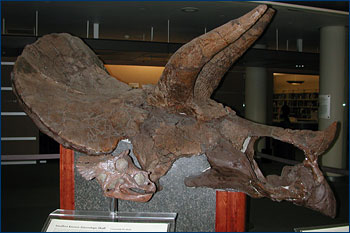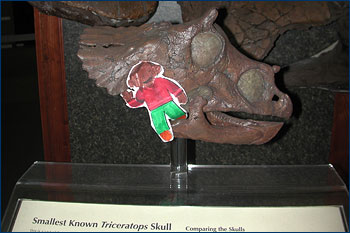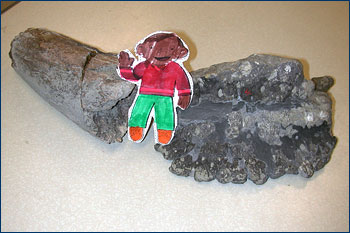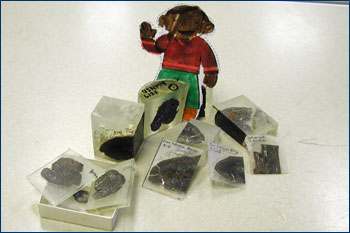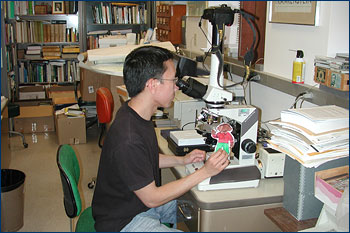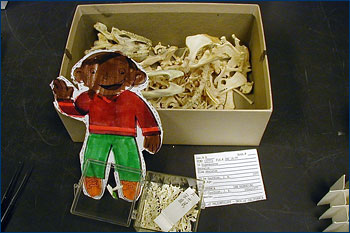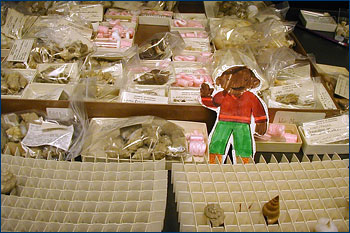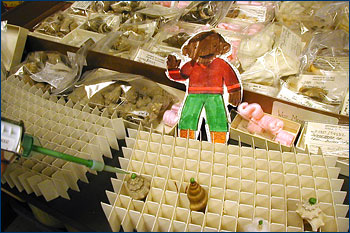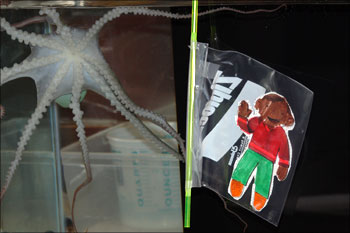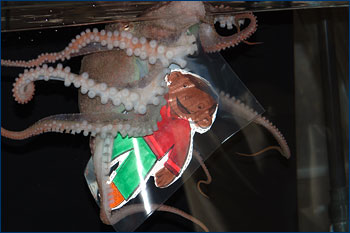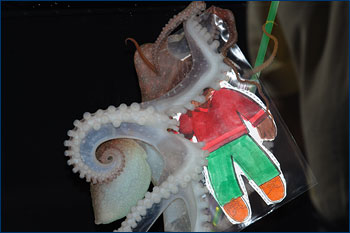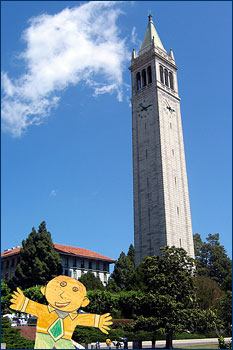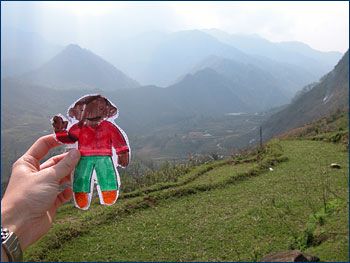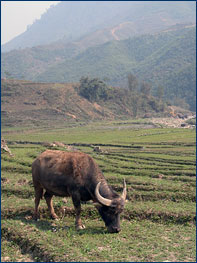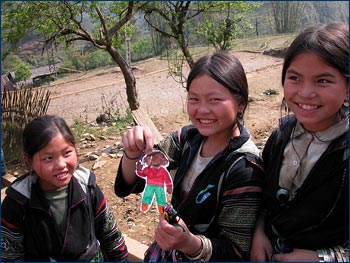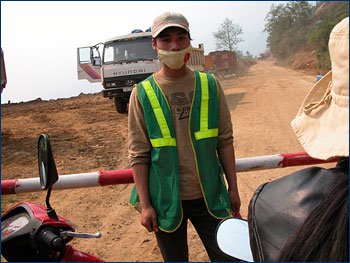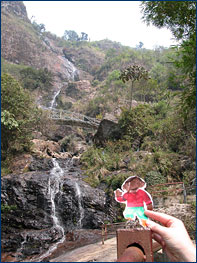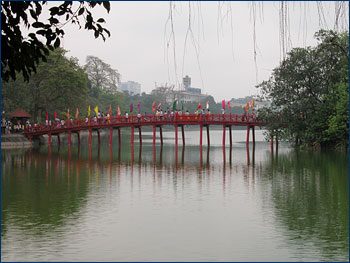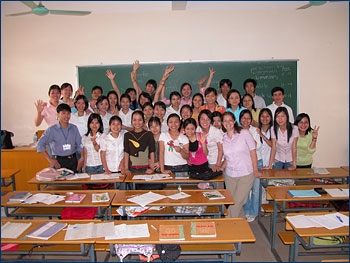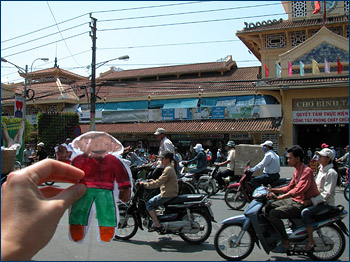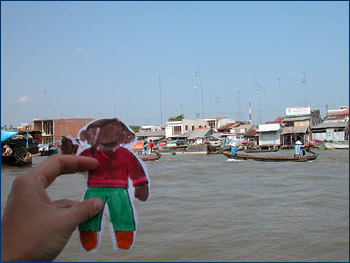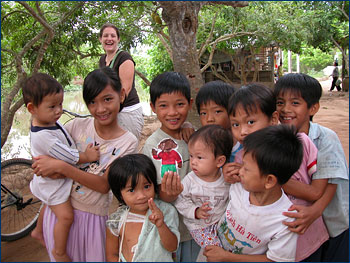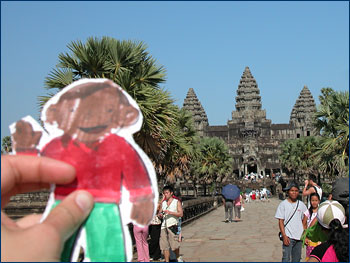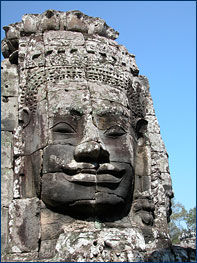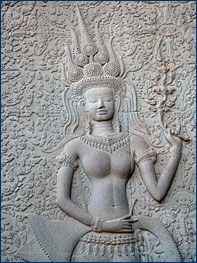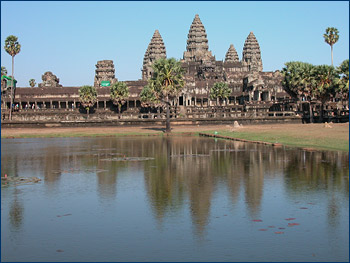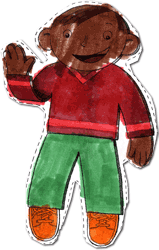 |
|
• Flat Stanley returns to UCMP in 2012! Read on …
UCMP is delighted to be part of the Flat Stanley Project. As you can see, it is pretty easy for Flat Stanley to slip inside an envelope and visit friends all over the world. Our Flat Stanley came to us from a first-grader named Cole who attends St. John the Evangelist School in New York. Cole is fascinated by fossils and dinosaurs and wants to grow up to be a paleontologist. Flat Stanley spent about a week with us here at UCMP and had many interesting adventures.
"On my first day here, I met everyone at the University of California Museum of Paleontology (UCMP) during something they call "Fossil Coffee." This event happens each Tuesday and gives museum staff, faculty, and students a chance to chat with one another while munching on treats and drinking coffee. This is usually followed by a talk and slide show of some sort so everyone can learn about the research of everyone else."
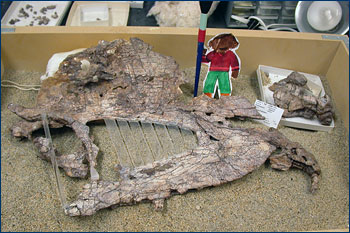 |
A visit to the Prep Lab
"Following Fossil Coffee, my adventure began when Jane Mason, Senior Preparator at UCMP, happily escorted me to the Fossil Preparation Lab. Click on any of the photos below to see an enlargement.
"In the Prep Lab, Jane showed me bones from the dinosaur Dilphosaurus wetherilli. This was a meat-eating dinosaur that has two crests on its head. It was made famous by the movie Jurassic Park as the spitting dinosaur — however, there is no fossil evidence that it could spit. Here I am in the sandbox with the skull of Dilophosaurus. The sand is used to support the fragile bones of the skull while it is being repaired. I was amazed at how thin the bone of the crest is as it curls over — like a thick potato chip.
